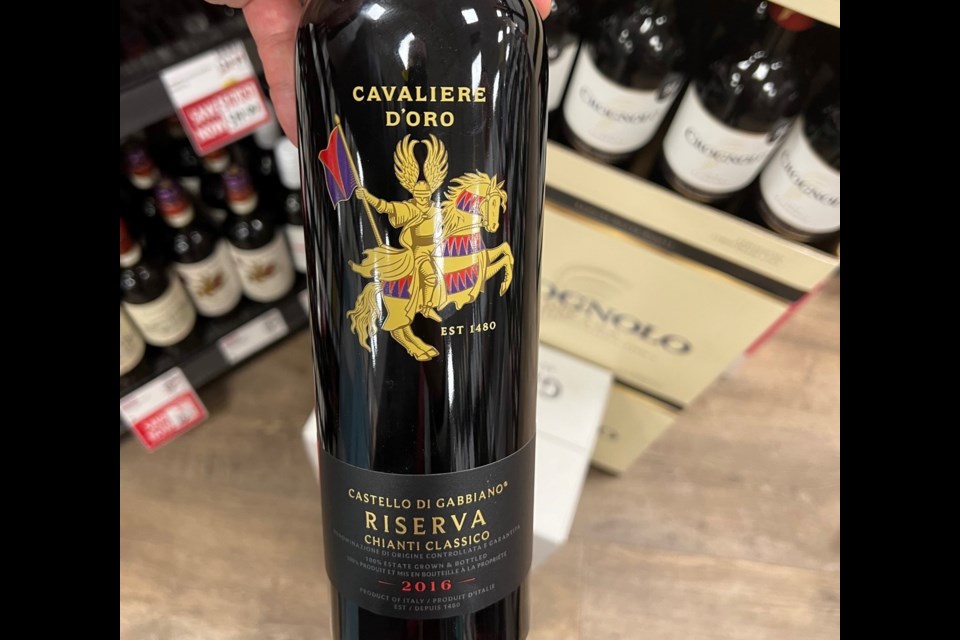Chianti is one of the most popular types of Italian wine. Its fruity, bold nature makes it easy to enjoy and its acidity and high alcohol content make it a natural pairing with a variety of foods such as pizza or pasta, as well as meat and tomato-based dishes.
Chianti is a wine region in Tuscany, which is located in central Italy. Florence is a major city located in Tuscany. As Italian wines are considered “Old World” wines, their wine labels typically do not list what grape varietals are used to produce the wine. The Chianti region primarily produces red wines made from predominantly the Sangiovese grape. Common descriptors associated with Chianti wines include cherry, dark plums and herb tastes and aromas. Because Chianti is a fairly large region, there is an abundance of Chianti wine produced.
One of the most appealing things about Chianti wines is most of them are drinkable right away and fairly affordable. The most basic Chianti wines are only aged for six months before release so they are simple wines with a lot of cherry and fruit notes, high alcohol and high tannins. They are made for immediate consumption and generally taste better with food. Some wines are from Chianti Classico, which is a distinct area between the cities of Florence and Siena. Generally, these are higher-quality wines that are marked with a black rooster on the label. Legend has it that during the Middle Ages, the Republics of Florence and Siena ended their long-standing rivalry and decided to settle the borders between their 2 Republics. They decided that on a specific day, when a rooster awoke, knights from each hometown would ride off to meet each other and where they met would be the border between the 2 Republics.
The Sienese people chose a white rooster to wake their knight up at dawn while the Florentines chose a black rooster to wake up their knight. Whereas the Sienese people fed their rooster and treated it like royalty, the Florentines starved their black rooster and put it in an uncomfortable cage. So on the chosen day, the black rooster of the Florentines started crowing before dawn since it was so hungry and put in such terrible conditions. The Florentine knight thus got a head start on the knight from Siena, so the border was drawn only a few kilometres outside of Siena. That is why the black rooster is so celebrated in Chianti and is put on every Chianti Classico wine!
Chianti wines that are aged longer are typically going to be more balanced, have a longer shelf life and therefore be more expensive. Wines that are aged more than a year (that are not located inside Chianti Classico) can call themselves Chianti Superiore and wines aged for more than two years can call themselves Chianti Riservas. Most Riserva wines will be aged in oak and have some oak and vanilla influence in their aroma or taste.
The very best quality Chianti wines are labelled Gran Selezione. These wines must be aged for a minimum of 30 months, must come from Chianti Classico region and must pass a taste test administered by the Chianti Classico Consortium or the governing body of Chianti Classico wines. Gran Selezione wines are built for aging and generally need 5-8 years after the vintage before they are ready to drink
Our BC liquor stores have a multitude of Chianti wines. On the value end, try the Gabbiano 2018 Cavaliere D’Oro Chianti Classico Riserva, on sale until September 2, 2023, from $29.99 to $22.99. One of my favourite Gran Selezione Chiantis is the Castello Di Ama Gran Selezione Chianti Classico San Lorenzo priced at $64.99. There are a number of vintage available at BC liquor stores but the best vintage potentially available is 2016. Until next time happy drinking!
Tony Kwan is a lawyer by day, and a food and wine lover by night. Kwan is an epicurean who writes about wine, food and enjoying all that life has to offer.



